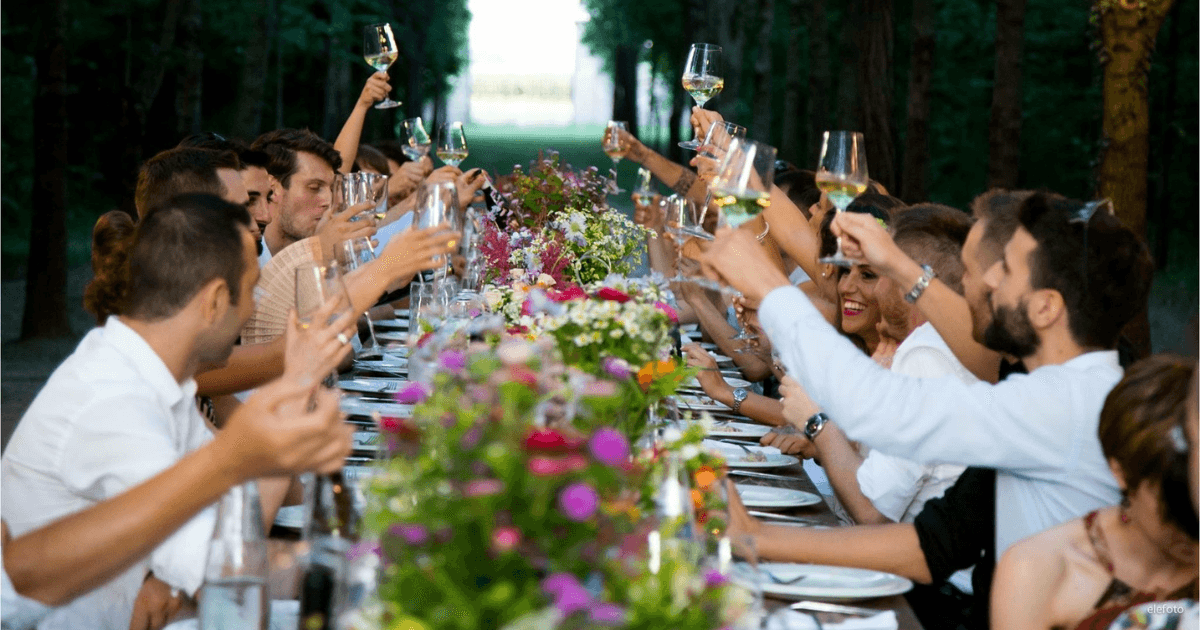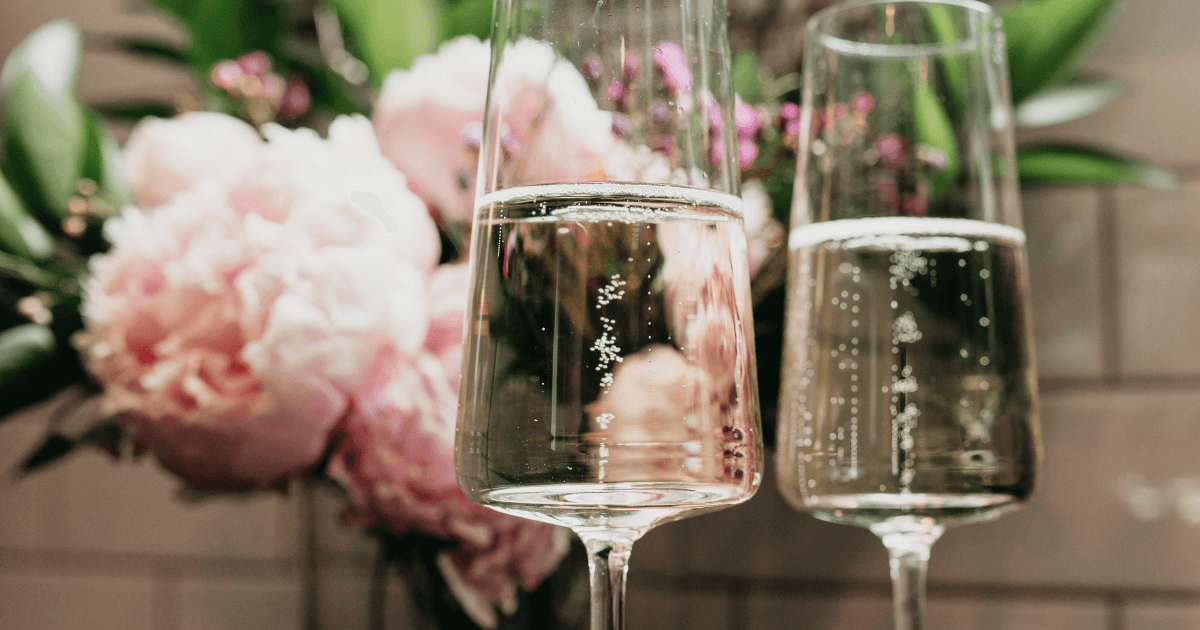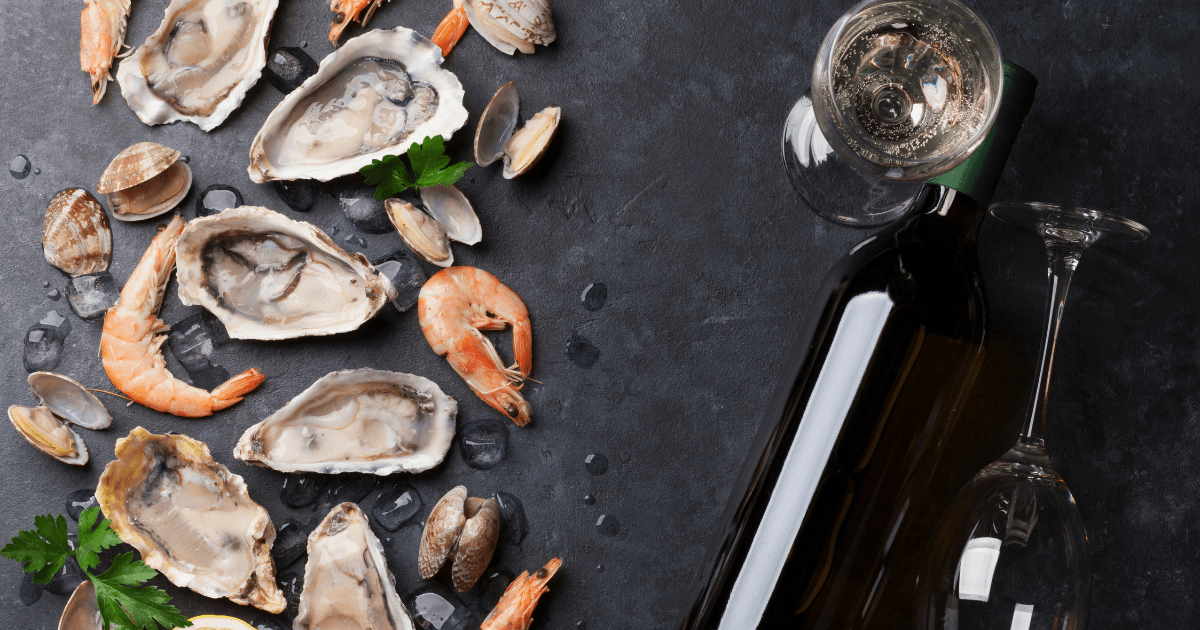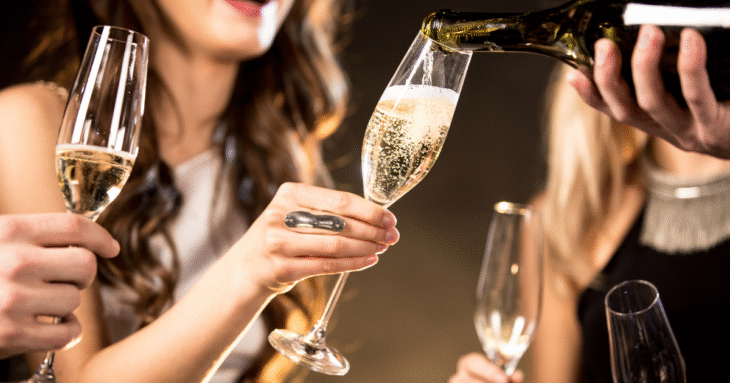How to Organize a Champagne Tasting Event: A Step-by-Step Guide
Hosting a champagne tasting is more than pouring glasses of bubbly—it’s curating an atmosphere of discovery, indulgence, and shared delight. The moment your guests step in, every detail should whisper refinement and celebration. From the gleam of the glassware to the aroma of a freshly uncorked vintage, the experience should be nothing short of unforgettable.
Whether you’re planning a refined evening with connoisseurs or introducing friends to the joy of sparkling wine, this guide will walk you through each step to help you create a seamless and luxurious affair. To organize a champagne tasting event, curate a variety of styles, prepare the right glassware and materials, set an elegant ambiance, and guide your guests through each pour with purpose and playfulness.
Key Takeaways
- Champagne tastings create an immersive experience that blends celebration, education, and sensory pleasure.
- Planning a champagne tasting starts with setting the tone, guest list, and choosing a balanced lineup of bottles.
- Glassware, ambiance, and food pairings all elevate the champagne tasting from ordinary to unforgettable.
- Guiding the tasting with structure and storytelling helps guests appreciate each pour and its unique character.
- Interactive touches and favors add personality to your champagne tasting and leave a lasting impression.
Why Champagne Tastings Make Exceptional Gatherings
There’s something timeless about champagne. It’s not just the drink—it’s the anticipation in the pop, the elegance in the pour, and the joy it inspires with every delicate bubble. A champagne tasting invites guests into an atmosphere of sophistication and celebration, where conversations sparkle just as much as the glasses in hand.
In our fast-paced world, a champagne tasting offers a return to ritual. It slows the evening down, allowing guests to be fully present. Whether it’s a birthday soirée, bridal brunch, holiday celebration, or a corporate event meant to impress, a well-orchestrated tasting combines sensory pleasure with style and storytelling.
Champagne Tasting vs. Sparkling Wine Tasting
Champagne holds a unique status in the sparkling wine family. True champagne hails only from the Champagne region in France and is crafted using the Méthode Traditionnelle, a time-intensive process where secondary fermentation occurs in the bottle. This meticulous method, combined with the terroir of northern France, gives champagne its distinct character.
However, exploring sparkling wines from other regions—Prosecco from Italy, Cava from Spain, Crémant from other French regions—can add diversity and interest to your tasting. Including these offers both educational insight and exciting flavor comparisons. Guests might discover a new favorite or gain a deeper appreciation for champagne’s nuanced complexity.
Step 1 – Plan Your Guest List & Format

Decide on the Vibe (Formal or Casual)
Will your evening resemble a sommelier-led tasting or a social, effervescent affair with friends? The tone you set determines everything else. Formal tastings benefit from structured seating, guided notes, and limited groups. Casual formats can feel more festive, with guests moving freely between tasting stations. Consider your audience and venue. A formal affair may suit a private dining room or candlelit patio. A more relaxed event could shine on a garden terrace or open-concept living space.
Choose Number of Guests Wisely
Tastings are best when guests can interact, compare notes, and feel involved. Six to twelve guests strike the perfect balance for discussion without overwhelming your setup. More than that, and you may need multiple pouring stations or event staff. Be mindful of pacing—tasting too many champagnes in a short span can lead to palate fatigue. Offering water, light bites, and breaks between flights enhances the experience.
Set a Date & Send Invitations
Give yourself at least two to three weeks of lead time for planning and invitations. Choose an evening when your guests can linger. Design invitations that reflect the occasion—digitally embossed invites or handwritten cards exude elegance. A clever touch: include a champagne quote or phrase. Something like “Come quickly, I am tasting the stars!” sets the mood beautifully.
Step 2 – Select the Champagne Styles
Curate a Balanced Tasting Lineup
Creating a journey for the palate means offering a thoughtful range of champagnes. Include:
- Brut Nature – bone dry with zero dosage
- Extra Brut – very dry, crisp
- Brut – dry, classic
- Extra Dry – off-dry, slightly sweet
- Sec / Demi-Sec – noticeably sweet
- Rosé – fruity, romantic, visually striking
- Vintage – aged from a single harvest year
- Non-Vintage – the house’s signature blend
- Prestige Cuvées – rare, refined, and often aged longer
A tasting of five to seven styles offers structure and variety without overwhelming the senses.
Choose Bottles by Region & Producer
Blend prestige houses with grower champagnes. Larger houses offer consistency and storytelling. Growers often showcase terroir and passion in every bottle. Highlight producers with unique practices—biodynamic farming, unusual blends, or rare vintage releases. Sharing anecdotes about each house—how a widow founded an empire or how a hillside vineyard defied odds—elevates the experience. Guests don’t just drink; they travel through time.
Decide How Many Bottles
One bottle per six people per style is generally sufficient. If offering five to seven bottles, you’ll have enough to cover a full flight. Keep extra chilled in case a favorite runs dry. Glass size and pour control are important. Use a jigger or measured pourer for consistency. Save a splash of each for a “best in show” round later.
Step 3 – Prepare the Tasting Materials

Tasting Sheets & Scoring Cards
Provide a tactile element to the experience. Create custom tasting cards with spaces for:
- Appearance (color, clarity, bubble finesse)
- Aroma (fruit, floral, yeasty, nutty)
- Palate (balance, acidity, texture)
- Finish (short, long, evolving)
Offer a 1–10 scale and room for notes. Encourage open discussion—half the fun lies in hearing what others detect.
Glassware and Serving Tools
Presentation matters. Tulip-shaped glasses are preferred as they maintain bubbles and concentrate aroma. Avoid wide coupes unless aesthetics outweigh function.
Essentials include:
- Ice buckets or marble chillers
- Champagne opener or saber
- Serving trays
- Linens for handling condensation
- Sparkling wine stoppers
Add flair with decorative name tags, etched tasting glasses, or gold-dipped stirrers.
How to Pour Champagne Properly
Pour at a 45-degree angle into a tilted glass to preserve bubbles. Start with a small amount and top off slowly. Avoid foaming or spilling by keeping the bottle steady. Optimal temperature is between 45–48°F. Store bottles horizontally in the fridge for 24 hours before the event, then transfer to ice buckets 30 minutes prior.
Step 4 – Set the Mood and Ambiance
Choose a Stylish Location
Location sets the tone. Whether indoors or outdoors, choose a venue that aligns with your desired atmosphere. Drape tables with crisp linens and set up a central tasting station.
Consider:
- Rooftop lounges with skyline views
- Historic homes with vintage flair
- Garden patios under twinkling string lights
Make the tasting area the visual anchor of the evening.
Decor That Elevates the Experience
Build a tablescape with:
- White, cream, or blush linens
- Crystal candle holders
- Handwritten menus or tasting maps
- Fresh floral arrangements (low enough for conversation)
A champagne tower offers a dramatic focal point, perfect for a photo moment or the event’s grand finale.
Curate the Soundtrack
Music shapes emotion. Select a playlist of:
- French bistro jazz
- Acoustic covers
- Instrumental piano
- Classic Hollywood soundtracks
Avoid anything too lyrical or fast-paced. Let the ambiance breathe.
Step 5 – Pair with Perfect Bites

Classic Pairings
Timeless combinations never fail:
- Oysters with Brut Nature
- Caviar on blini with Extra Brut
- Brie or Camembert with Brut
- Strawberries with Rosé
Include a brief explanation of why each works—acidity, salt, fat, or sweetness interplay.
Savory Surprises
Push beyond tradition:
- Fried chicken with Extra Dry
- Sushi with Rosé or Brut
- Truffle fries with Vintage champagne
- Duck pâté with Demi-Sec
Unexpected pairings spark conversation and broaden palates.
Sweet Treats
Pair Sec and Demi-Sec with:
- Lemon tart
- Raspberry macarons
- White chocolate mousse
Desserts should match or be less sweet than the champagne. Overly sugary foods can flatten even the finest bubbly.
Create a Balanced Tasting Menu
Between each pour, offer palate cleansers:
- Still water
- Unsalted crackers
- Mild cheeses (Comté, Gruyère)
These reset the senses and enhance the next tasting.
Step 6 – Guide the Tasting Like a Pro
Teach the Tasting Technique
Invite guests to observe:
- Sight – Look at color depth and bubble size
- Smell – Swirl gently, sniff for fruit, brioche, or minerality
- Taste – Sip slowly, let it linger, note acidity and body
- Reflect – Discuss finish and overall impression
Remind guests that champagne is a layered experience, meant to be savored.
Serve in the Right Order
Pours should follow this general order:
- Brut Nature
- Extra Brut
- Brut
- Extra Dry
- Rosé
- Vintage
- Demi-Sec
From driest to sweetest, lightest to fullest. This ensures balance and clarity.
Encourage Interaction
Add interactive elements:
- Blind tasting game
- Champagne trivia
- Flavor memory match
- “Best label story” award
Fun and flair turn good tastings into unforgettable ones.
Step 7 – Add Interactive or Memorable Touches

Champagne Trivia or Games
Spark curiosity with a few rounds of:
- “Guess That Note” aroma jars
- Champagne region map quizzes
- Myth vs. Fact lightning rounds
Prizes could be mini sabers, flutes, or engraved coasters.
Create a Photo-Worthy Experience
Design a vignette with:
- Backdrop with gold fringe or greenery wall
- Props like vintage glasses, faux fur shawls, sabers
- Ring light for glam shots
Encourage social sharing with a branded hashtag.
Gift Champagne Favors
Send guests off with:
- Mini champagne bottles
- Custom tasting journals
- Champagne-scented candles
- Sugar cubes or sabrage-themed pins
Memories are made in the details.
Step 8 – Clean Up & Storage Tips
Properly Store Leftovers
Refrigerate opened bottles using a high-quality sparkling wine stopper to maintain freshness. Enjoy within 24 to 48 hours for best taste and effervescence. Though bubbles may fade, many champagnes develop softer, rounder flavors by the next day. For regular hosts, consider a vacuum-sealed preservation system to extend shelf life and reduce waste. It’s a smart investment that helps you enjoy every drop without rushing.
Glassware Cleaning
Rinse your glasses immediately after use with warm water to avoid staining and aroma buildup. Skip strong detergents, which can leave residue and alter champagne’s delicate nose. Dry with a lint-free cloth for a streak-free, crystal-clear finish.
Reuse Tasting Materials
Preserve your tasting sheets digitally or print fresh copies for each event. For sustainability and convenience, laminate your templates and use dry-erase markers. This allows for easy reuse and adds a polished touch to your tasting toolkit.
Advanced Tips for Champagne Enthusiasts
Hiring a Sommelier or Champagne Educator
Bringing in a certified expert adds:
- Deeper historical and production insight
- Guided discussions
- Professional pouring and sabering demonstrations
Ideal for milestone events or clients who crave authenticity.
Themed Tastings
Design specialty experiences:
- Blanc de Blancs vs. Blanc de Noirs
- Women in Champagne – All female-run houses
- Sabrage Night – Learn and watch the art of sabering
Themes add depth and anticipation.
Keeping the Event Sustainable
Go green with:
- Compostable tasting utensils
- Cloth napkins and reusable decor
- Bulk ice delivery instead of bagged
Sustainability is both modern and thoughtful.
Celebrate the Art of Hosting a Champagne Tasting
A champagne tasting is a dance between elegance and delight. It isn’t just about flavor—it’s about atmosphere, emotion, and connection. With thoughtful planning and creative flair, your tasting becomes a story told in glasses and laughter.
At California Champagne Sabers, we believe in elevating every toast into a treasured moment. From artisanal sabers to curated accessories, we offer the tools to turn your champagne tasting into an unforgettable occasion. Let’s raise our glasses together—with purpose, style, and a touch of sparkle.
